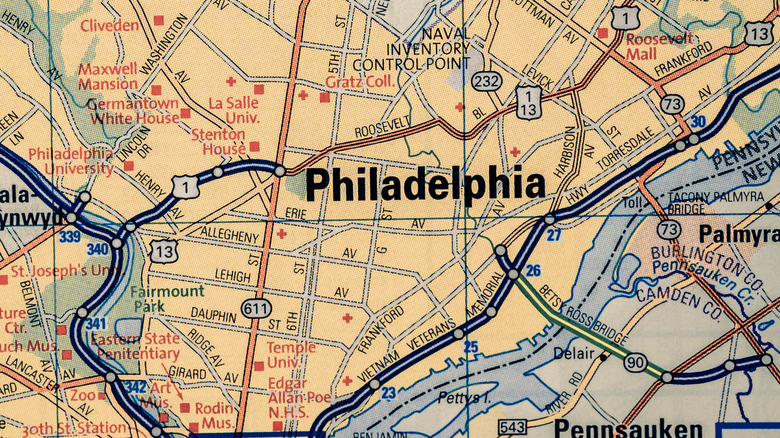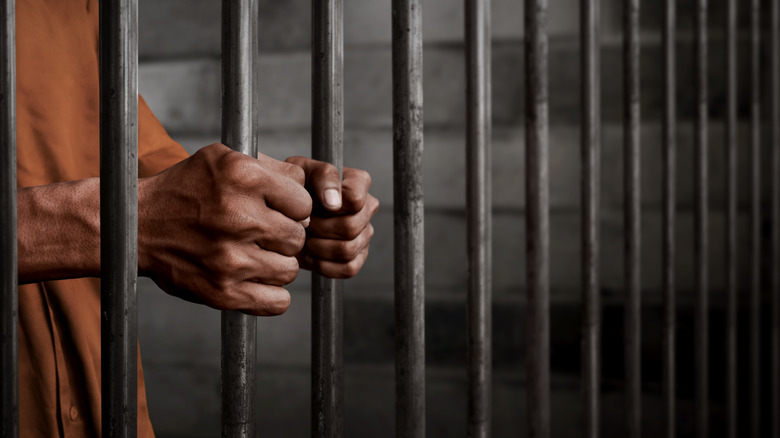The Untold Truth Of The Frankford Slasher
Over the course of a five-year period between 1985 and 1990, a serial killer preyed upon women in a rough neighborhood in Philadelphia. The brutality of the murders was striking: They'd been sexually assaulted, stabbed dozens of times each — to the point that their internal organs were exposed to the elements — and the legs of the victims' bodies were displayed in a lurid pose meant to demean the victims even further. When the dust had settled, at least nine victims were identified, all women who, if not allegedly addicted to drugs, were thought to frequent an area of high drug activity.
Meanwhile, Philadelphia police may have dragged their feet in the early stages of the case. And though they did put a man away for one of the murders, the evidence to convict him was weak at best, and he may have been a scapegoat for a police force keen to put the matter to rest.
Meanwhile, 30 years later, the crimes remain unsolved.
This is the untold truth of the Frankford Slasher.
The neighborhood
In the middle to late 1980s, the Frankford neighborhood of North Philadelphia had, like many American inner-city neighborhoods, fallen on tough times. As Duane Swierczynski wrote for the Philadelphia City Paper, the neighborhood had once been a thriving section of town known for its music scene and shops — that is, until crack cocaine, economic crises, and poorly-planned city engineering took its toll on the district, turning it into something that, if not a ghetto, was certainly ghetto-adjacent.
At the time, a popular bar, Goldie's, was the hangout of marginalized women. "'Nobodies' — female barflies who, if they weren't active [sex workers], certainly lived a similar lifestyle," as Swierczynski described them.
It would take the Philadelphia police years to get there, but it would eventually be revealed that Goldie's was the link that connected the victims: All of them were known to frequent that bar, and indeed, police would at one point reveal a sketch of a suspect who was believed to have been talking to one of the victims at the bar.
The Frankford Slasher victims
The first victim that would ultimately be tied to the Frankford Slasher case was found on August 26, 1985, according to Penn State University. Helen Patent, 52, was found in a train yard, having been sexually assaulted and stabbed 47 times. Indeed, so violent was her death that her internal organs were exposed. What's more, her killer had positioned her body in such a way that her legs were in a salacious pose.
A few months later, on January 3, 1986, Anna Carroll was found dead on the floor of her home. Though she had "only" been stabbed six times, she, too, had been posed, and her internal organs were also exposed.
More victims would turn up over the years, with the last, Michelle Dehner, 30, dying in 1990, per Criminal Encyclopedia.
All the victims were stabbed, sexually assaulted, and posed. What's more, there were other links between them, as Marissa Bluestine from the Innocence Project of Pennsylvania told WCAU.
"They were all Caucasian, lived in the area, had a history of mental illness or drug dependency. They were women on the edges of society," Bluestine said.
The police
It wasn't until there was a third victim, Suzanne Olszef, that Philadelphia police were able to connect the three murders to Goldie's, and it wasn't until a fourth victim, Jeanne Durkin, that the police admitted that it appeared a serial killer was active.
According to Penn State University researcher Gillian Camacho, the Philadelphia police deliberately misled the general public (Camacho used the word "lied"), saying that there was no serial killer involved and that the murders were not related. Further, Camacho posited that the murderer stopped killing for a year afterward, perhaps stung from not having gotten the credit and attention they craved, before resuming his killing spree.
It was also about this time that the Philadelphia police began to get clues about a possible suspect: a middle-aged white man who may or may not have been seen talking to the women at Goldie's, or walking with them around the neighborhood.
The Frankford Slasher suspects
Authorities did eventually put away one man for one of the Frankford murders, but he may have been the wrong person.
As WCAU reported, police tied the murder of one victim, Carol Dowd, who died in 1990, to a suspect. Leonard Christopher was a Black man who worked in the area. Some witnesses claimed they saw him walking with Dowd on the night she died, and other witnesses claimed they'd seen Christopher with a white suspect who matched a police sketch.
Despite no physical evidence typing Christopher to the crime, he was convicted of murder and later died in prison, maintaining his innocence until the end. Meanwhile, while he was in jail awaiting prison, the ninth and final victim died, casting even more doubt on Christopher's supposed guilt.
Police also believed that they had a person of interest who, unlike Christopher, was actually white and middle-aged. He was identified as a minister and worked in the area. However, during the investigation, he disappeared and was never heard from again.
The murders remain unsolved to this day.
Murder and at-risk women
The victims of the Frankford Slasher exist within the larger context of marginalized women being acutely at risk of violence, including murder, in the United States. All the victims reportedly frequented an area known for drug activity, many if not all were suspected of being addicted to drugs, and at least some, if not all, may have been sex workers.
According to a 2020 A&E report, murderers who prey on women are particularly drawn to sex workers, drug addicts, and other women who live on the margins of society. Specifically, between 1970 and 2009, 22 percent of female victims of serial killers were sex workers, and that number has jumped to 43 percent in the past decade.
There are a couple of reasons for this. For one, serial killers may presume that such women are unlikely to be missed. Further, police are generally unwilling to appoint resources to solving such murders. What's more, sex workers who are victims of violence but live to tell about it rarely cooperate with police because their very occupation is itself a crime.
If you or anyone you know is struggling with addiction issues, help is available. Visit the Substance Abuse and Mental Health Services Administration website or contact SAMHSA's National Helpline at 1-800-662-HELP (4357).





